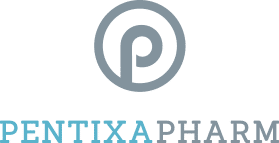预约演示
更新于:2025-05-07
The Holden Comprehensive Cancer Center
更新于:2025-05-07
概览
标签
其他疾病
肿瘤
呼吸系统疾病
小分子化药
治疗用放射药物
诊断用放射药物
疾病领域得分
一眼洞穿机构专注的疾病领域
暂无数据
技术平台
公司药物应用最多的技术
暂无数据
靶点
公司最常开发的靶点
暂无数据
| 排名前五的药物类型 | 数量 |
|---|---|
| 小分子化药 | 2 |
| 诊断用放射药物 | 1 |
| 治疗用放射药物 | 1 |
| 多肽偶联核素 | 1 |
| 排名前五的靶点 | 数量 |
|---|---|
| CXCR4(C-X-C基序趋化因子受体4) | 2 |
| CKAP2 x GNA11 x GNAQ x NOSs | 1 |
关联
3
项与 The Holden Comprehensive Cancer Center 相关的药物靶点 |
作用机制 CXCR4拮抗剂 |
非在研适应症 |
最高研发阶段临床3期 |
首次获批国家/地区- |
首次获批日期- |
靶点 |
作用机制 CXCR4调节剂 [+1] |
非在研适应症- |
最高研发阶段早期临床1期 |
首次获批国家/地区- |
首次获批日期- |
作用机制 CKAP2 modulators [+3] |
在研机构 |
原研机构 |
非在研适应症- |
最高研发阶段临床前 |
首次获批国家/地区- |
首次获批日期- |
27
项与 The Holden Comprehensive Cancer Center 相关的临床试验NCT03541486
XACT-Pancreas 2: Pharmacological Ascorbate, Gemcitabine, and Radiation Therapy for Pancreatic Cancer, Phase 2
Radiation therapy improves cancer cure rates by killing cancer cells but it also contributes to long-term side effects in cancer survivors by unintentionally damaging normal organs such as the intestine. This research will what side effects patients with cancer experience, if high dose vitamin C helps reduce these side effects, and if high dose vitamin C increases the survival of patients with pancreatic cancer. We will meet with patients during the study to better understand their experience during their cancer treatment. In the long term, our research could provide a new way help cancer survivors avoid many permanent side effects of cancer treatments.
开始日期2025-12-31 |
NCT05557708
Phase 1 Trial of Dosimetry Guided 212Pb-pentixather Radioligand Therapy in Patients With Atypical Lung Carcinoids and Neuroendocrine Carcinomas
This is a first-in-human clinical trial evaluating the safety of an alpha-radiation treatment (Lead-212 labelled Pentixather) in patients who have been diagnosed with, and previously treated, for atypical carcinoid lesions of the lung.
开始日期2024-07-01 |
申办/合作机构  University of Iowa University of Iowa [+3] |
NCT06148636
A Phase 1, First-in-human Clinical Trial of [212Pb] VMT-alpha-NET Using a Forward Dosimetric Planning Technique to Treat Refractory or Relapsed Neuroendocrine Tumors
This is a safety study to determine the recommended dose to test in clinical trials. The study involves two treatments with 212Pb (212-lead) VMT-α-NET. This is a safety study only; it will most likely not provide therapeutic benefit.
开始日期2023-11-10 |
申办/合作机构  University of Iowa University of Iowa [+3] |
100 项与 The Holden Comprehensive Cancer Center 相关的临床结果
登录后查看更多信息
0 项与 The Holden Comprehensive Cancer Center 相关的专利(医药)
登录后查看更多信息
107
项与 The Holden Comprehensive Cancer Center 相关的文献(医药)2025-12-31·Gut Microbes
Human colitis-associated colorectal carcinoma progression is accompanied by dysbiosis with enriched pathobionts
Article
作者: Eletrebi, Mohamed ; Parajuli, Bishal ; Bosch, Dustin E. ; Masaadeh, Amr H. ; De Jager, Nicola
2025-03-01·Redox Biology
Pharmacological ascorbate combined with rucosopasem selectively radio-chemo-sensitizes NSCLC via generation of H2O2
Article
作者: Spitz, D R ; Beardsley, R A ; Fath, M A ; Kalen, A L ; Solst, S R ; Caster, J M ; Keene, J L ; Riley, D P ; Sho, S ; Pulliam, C F ; George, B N ; Allen, B G ; Bayanbold, K ; Johnson, S T ; Singhania, M ; Buettner, G R ; Wagner, B A
2025-03-01·Prostate Cancer and Prostatic Diseases
Natural Killer Cell Infiltration in Prostate Cancers Predict Improved Patient Outcomes
Article
作者: Zakharia, Yousef ; Bilen, Mehmet A ; Makovec, Allison ; Shackelford, Madison ; Stein, Mark N ; Miller, Jeffrey S ; Felices, Martin ; Elliott, Andrew ; Sledge, George ; El-Deiry, Wafik S ; Radovich, Milan ; Hwang, Justin H ; Zarrabi, Kevin K ; Nabhan, Chadi ; Lozada, John R ; Antonarakis, Emmanuel S ; Arafa, Ali T ; Kellen, Samuel ; Heath, Elisabeth I ; Narayan, Vivek ; Barata, Pedro ; Patniak, Akash ; Zorko, Nicholas A ; Hoon, Dave S B
1
项与 The Holden Comprehensive Cancer Center 相关的新闻(医药)2017-04-24
April 24, 2017
By
Mark Terry
, BioSpace.com Breaking News Staff
If
Gilead Sciences
’ management should ever be at a loss as to who the company should buy, there are plenty of investors and analysts willing to offer
suggestions
Incyte Corporation
has always been at the top of the list, at least until the company’s baricitinib for rheumatoid arthritis was
rejected
by the
U.S. Food and Drug Administration (FDA)
last week. Despite that, it’s probably still at the top of the list. Others frequently cited include
Kite Pharmaceuticals
,
Vertex Pharmaceuticals
,
Puma Biotechnology
,
Portola Pharmaceutical
, and
Arrowhead Research Corporation
. One ambitious suggestion was
Celgene
Todd Campbell
, writing for
The Motley Fool
,
produces
yet another suggestion—NewLink Genetics.
The primary reason everyone wants Gilead to buy something is because the company’s dominant hepatitis C (HCV) franchises are dwindling because of competition and its own success—it essentially cures the disease. That causes the patient pool to be smaller. And
AbbVie
and
Merck & Co.
now sell competing drugs with similar cure rates at a lower price, which has made Gilead cut its own prices to stay competitive. As a result, worldwide sales in 2016 dropped 7 percent and net earnings plunged 18 percent.
So what’s the deal with
NewLink Genetics
?
Located in Ames, Iowa, NewLink focuses on immuno-oncology. On April 4, the company announced
interim results
from a Phase II trial of indoximod in combination with checkpoint inhibitors to treat advanced melanoma. In combination with Merck (MRK)’s Keytruda (pembrolizumab), indoximod showed a 52 percent overall recovery rate (ORR) and a 73 percent disease control rate (DCR).
“These data are impressive and demonstrate the potential of this combination to improve response rates of the currently available therapy for patients with advanced melanoma,” said
Yousef Zakharia
, assistant professor of Medicine, Division of Hematology, Oncology and Blood & Marrow Transplantation at the Iowa and
Holden Comprehensive Cancer Center
, in a statement. “Importantly, our combination therapy was well tolerated without an appreciable increase in toxicity.”
For its part, although Gilead has made attempts to grow its oncology pipeline, it’s had relatively little success. Campbell writes, “Assuming Gilead Sciences remains committed to cancer, I think they ought to focus on acquiring companies working on next-generation cancer fighting drugs, such as IDO inhibitors.”
Incyte’s epacadostat is an IDO inhibitor. So is NewLink’s indoximod and GDC-0919. But NewLink is a lot more affordable than Incyte.
Campbell writes, “Despite the solid showing (of indoximod), many industry watchers believe that apacadostat delivers a better blend of efficacy and safety because it targets IDO directly. Unlike epacadostat, indoximod disables IDO via cell signaling. While it’s true that indoximod might not be as robust of an IDO-inhibitor as epacadostat (no head-to-head studies are planned, nor are they likely to happen), NewLink’s GDC-0919 does work similarly to epacadostat, and results are expected later this year from an early stage trial that’s being conducted with collaboration partner
Roche Holdings
in patients with solid tumors.”
Incyte’s market cap is $24 billion. NewLink’s is only $537 million. And NewLink has two IDO inhibitors. Campbell writes, “I feel like it’s a bigger bargain. If Gilead Sciences were to make this deal, it would take on the risk of trial failures. It would also have to share GDC-0919’s success with Roche. Nevertheless, at this price, I’d be willing to accept those trade-offs.”
临床结果临床2期
100 项与 The Holden Comprehensive Cancer Center 相关的药物交易
登录后查看更多信息
100 项与 The Holden Comprehensive Cancer Center 相关的转化医学
登录后查看更多信息
组织架构
使用我们的机构树数据加速您的研究。
登录
或

管线布局
2025年11月02日管线快照
管线布局中药物为当前组织机构及其子机构作为药物机构进行统计,早期临床1期并入临床1期,临床1/2期并入临床2期,临床2/3期并入临床3期
临床前
1
2
临床1期
登录后查看更多信息
当前项目
| 药物(靶点) | 适应症 | 全球最高研发状态 |
|---|---|---|
212Pb-Pentixather ( CXCR4 ) | 神经内分泌癌 更多 | 临床1期 |
[68Ga] Pentixafor ( CXCR4 ) | 神经内分泌肿瘤 更多 | 临床1期 |
FR900359 ( CKAP2 x GNA11 x GNAQ x NOSs ) | 葡萄膜黑色素瘤 更多 | 临床前 |
登录后查看更多信息
药物交易
使用我们的药物交易数据加速您的研究。
登录
或

转化医学
使用我们的转化医学数据加速您的研究。
登录
或

营收
使用 Synapse 探索超过 36 万个组织的财务状况。
登录
或

科研基金(NIH)
访问超过 200 万项资助和基金信息,以提升您的研究之旅。
登录
或

投资
深入了解从初创企业到成熟企业的最新公司投资动态。
登录
或

融资
发掘融资趋势以验证和推进您的投资机会。
登录
或

生物医药百科问答
全新生物医药AI Agent 覆盖科研全链路,让突破性发现快人一步
立即开始免费试用!
智慧芽新药情报库是智慧芽专为生命科学人士构建的基于AI的创新药情报平台,助您全方位提升您的研发与决策效率。
立即开始数据试用!
智慧芽新药库数据也通过智慧芽数据服务平台,以API或者数据包形式对外开放,助您更加充分利用智慧芽新药情报信息。
生物序列数据库
生物药研发创新
免费使用
化学结构数据库
小分子化药研发创新
免费使用


